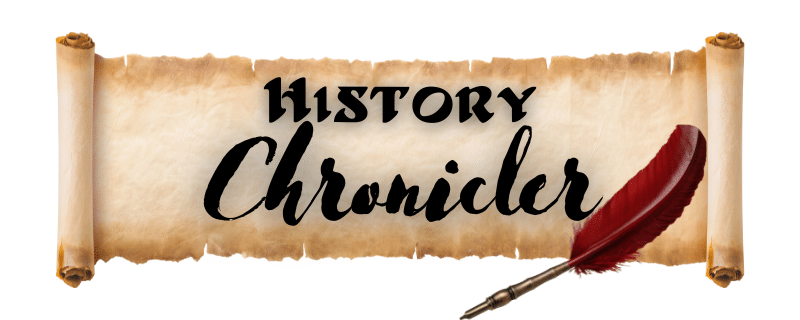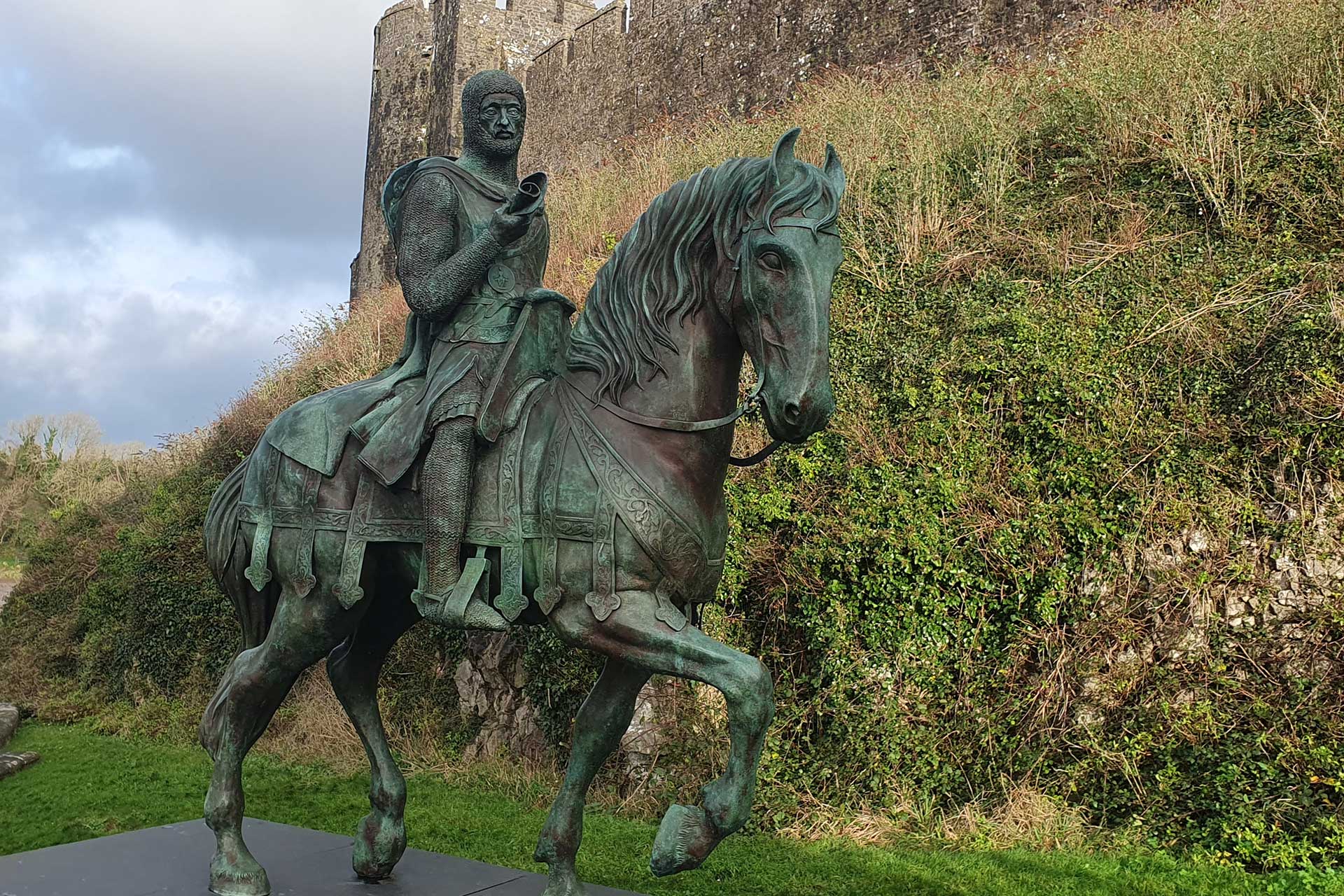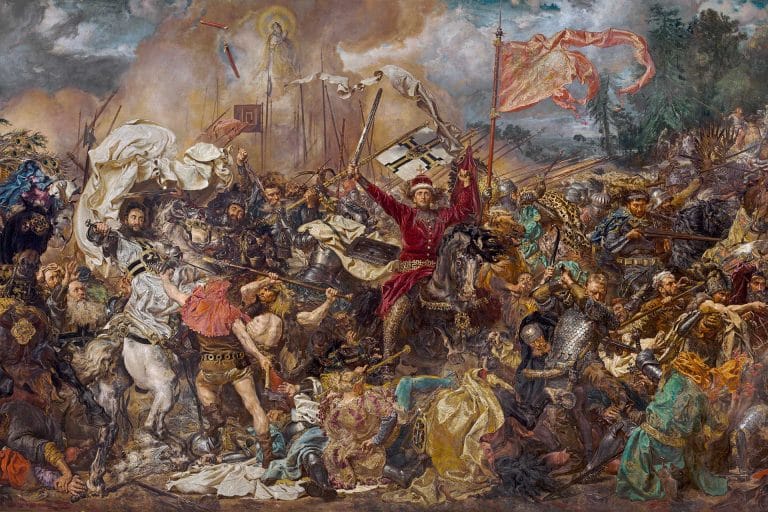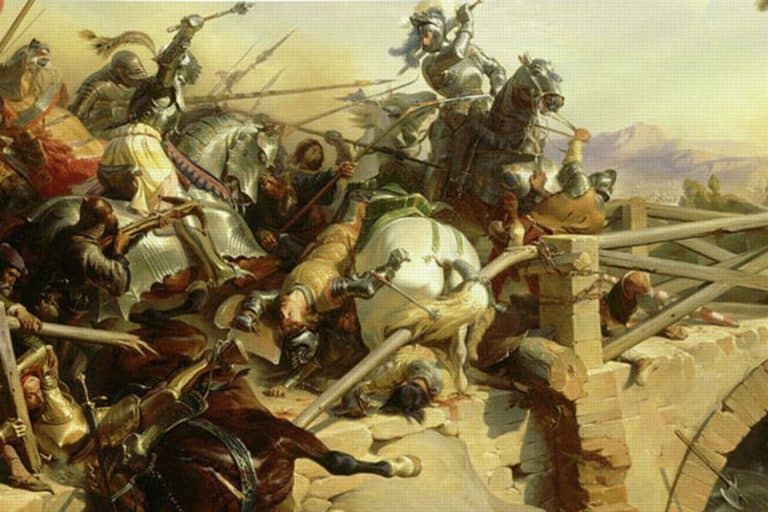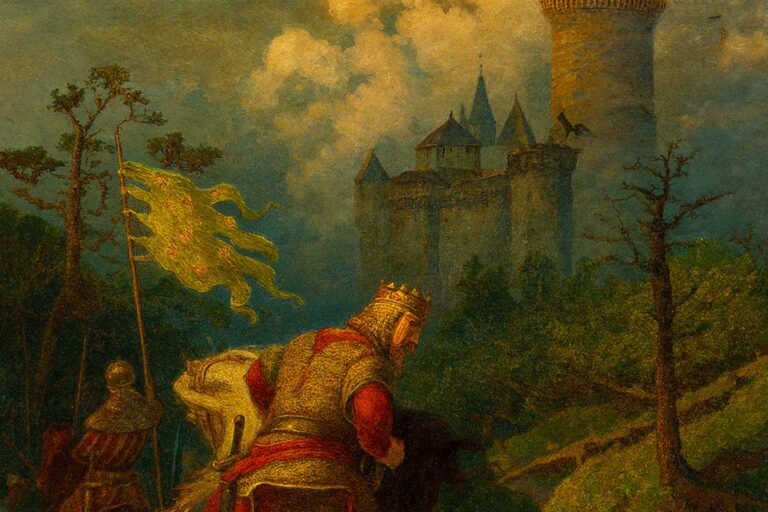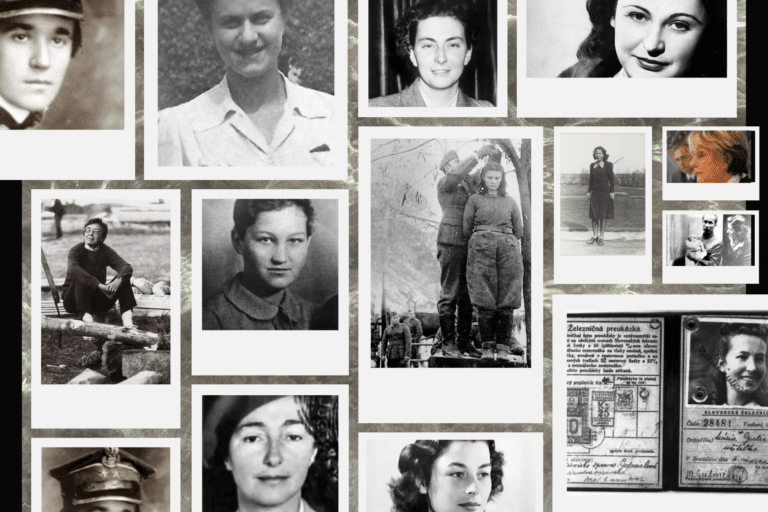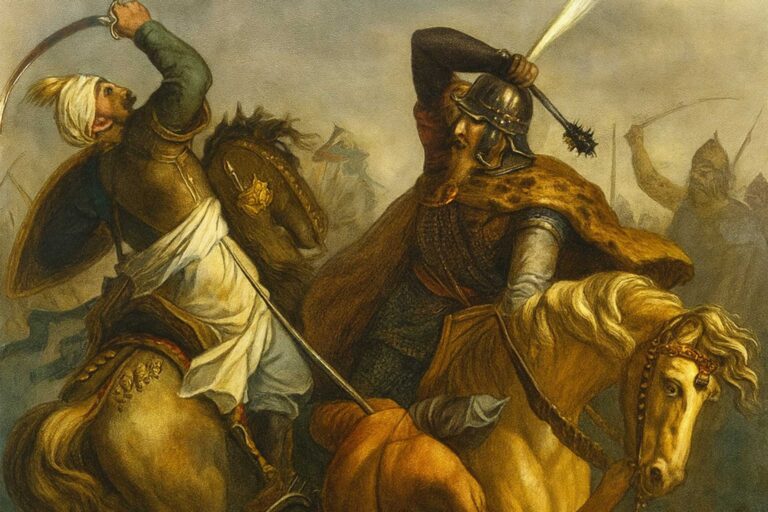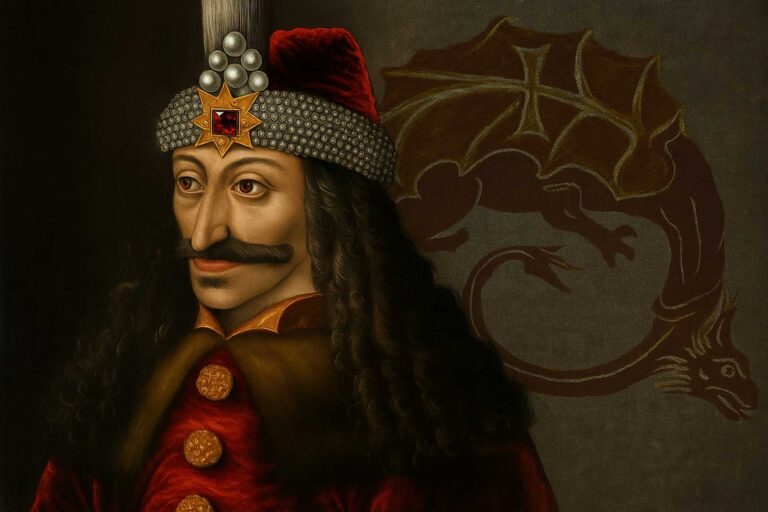8 Tales from the Life of William Marshal- England’s Greatest Knight
William Marshal is often referred to as the greatest knight that England has ever seen. His career was incredible; he rose from a landless younger son to a trusted statesman, knight, and soldier. On the battlefield, he was a legend, known for his cunning and his ability to lead men into battle. Marshal lived an epic life that very few people could match. This article will cover nine interesting facts about his life that may surprise you.
Marshal was born in 1147 and served five kings over his lifetime. He lived until he was 72, giving him plenty of time to be a crucial part of history and to make an impact on the lives of many. From being a household knight to the justiciar of England, Marshal was both feared and loved as one of the most remarkable knights of his time.
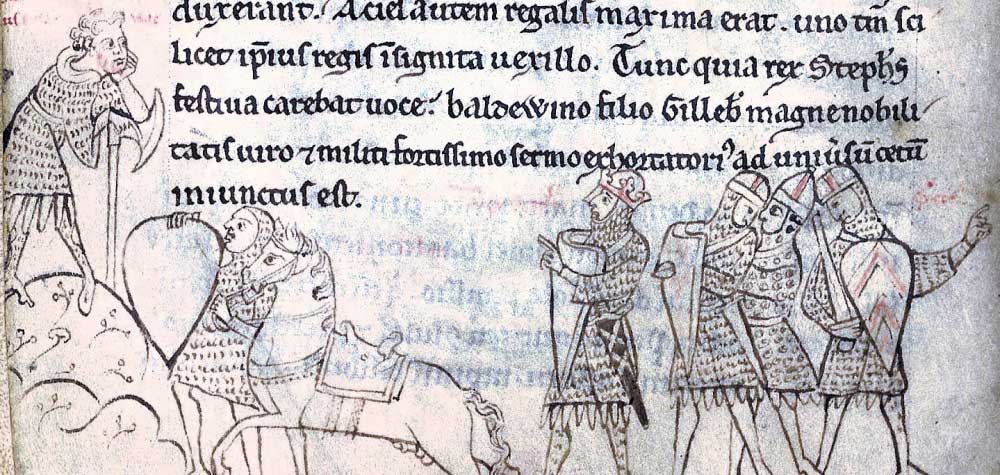
Held Hostage by King Stephen
William Marshal was born in 1146, but it was not until 1152 that his life was changed forever. His father, John Marshal, had defected from the service of King Stephen to that of his rival, Empress Matilda. In 1152, the king’s forces had besieged Newbury Castle, a castle held by the Marshal family. To guarantee John Marshal’s co-operation in surrendering the castle to King Stephen, the king took William as a hostage, which in all probability would have resulted in the boy’s execution if his father did not surrender. John Marshal did not, in fact, surrender; instead, he used the opportunity to fortify the castle further and gather support from Matilda’s followers.
Stephen sent John a message demanding surrender or the boy would be put to death before his eyes. John Marshal’s response to this threat was to say, “I still have the hammer and the anvil with which to forge still more and better sons!” This apparent callousness about the fate of his son appalled Stephen, and he was unable to go through with the execution.
William was not executed but remained a hostage for several months. In 1153, the civil war ended with the Treaty of Winchester. William was able to return to his family.
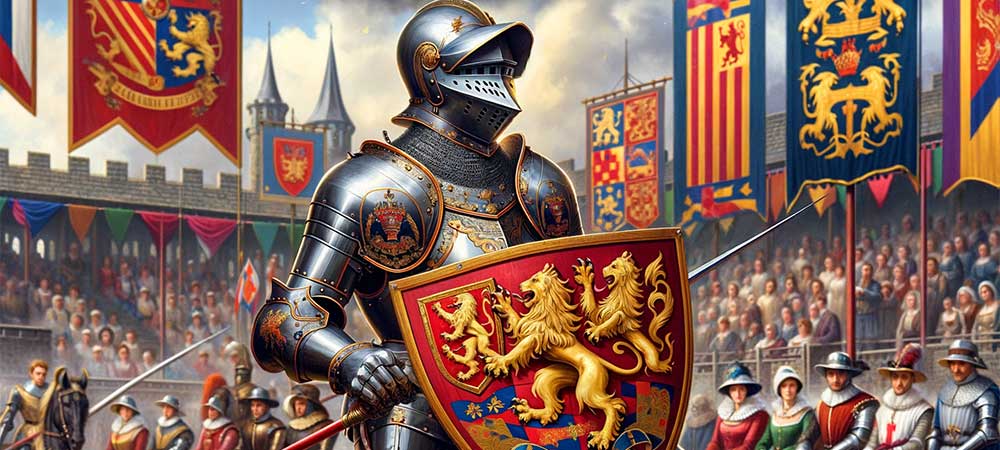
Champion of the Tournament Circuit
William Marshal’s life changed in 1167 when he first rode in a tournament sponsored by William de Tancarville, beginning his career as a medieval tournament competitor. Tournaments, unlike battles, were performances. Men had the opportunity to prove themselves as men of combat gallantry and/or insight into the chessboard’s cold calculations. In all of these, Marshal was nearly unrivaled in the European tournament scene. The tournaments were to demonstrate military skills, bring fame, and allow the knights to make money. William Marshal did all three in significant quantities.
Marshal’s history in tournaments made him wealthy in an age when a single tournament could bankrupt a less-gifted, unlucky knight. Throughout his life, he won countless jousts and melees, going on to hone the skills that would help to secure him an everlasting reputation as a knight of all knights. At these tournaments, he proved his physical and mental prowess, marking himself as one of the greatest knights of all time.
Marshal was not only fortunate but also had the drive, desire, and wherewithal to secure his victories, which are prime factors in his future successes.
The Rescue of Queen Eleanor from Guy de Lusignan
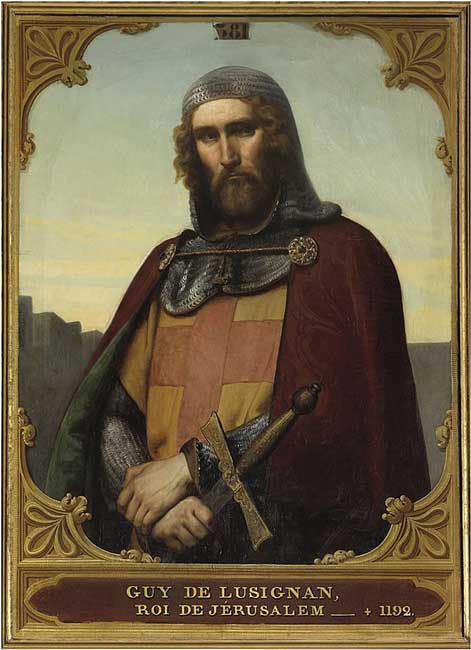
The first office which William Marshal held was with his uncle Patrick, Earl of Salisbury, who in 1168 was escorting Queen Eleanor of Aquitaine on a tour of her province. Near the Aquitaine border, the party was set upon by Guy de Lusignan, who wanted to seize the queen, possibly with the idea of forcing her into marriage. In the melee that followed, Patrick was killed, the queen escaped unhurt, and William was hit in the thigh and taken captive. The future Great Marshal needed to draw upon his reserves of fortitude and tenacity in the ensuing days.
The young knight was kept prisoner in a Lusignan castle, where his wound was becoming badly infected. William’s life was saved when an unknown friend in the castle, moved by the state in which he found the youth, provided him with a loaf of bread and some clean linen bandages that he had hidden for the purpose of treating his injury. In all probability, had William not received this fortuitous help, the infection would have killed him. His mettle and his tenacity during the ordeal did not go unnoticed, and he was ransomed and taken into Queen Eleanor’s household, where he spent two years, perfecting his tournament skills and becoming known as the embodiment of chivalric ideals.
Loyalty to Young King Henry

In William Marshal, Young Henry found a loyal and constant companion. Marshal would remain a steadfast supporter of Henry through thick and thin. This included periods of rebellion against King Henry II. When Henry the Young King was found in the Marshal’s company, it was not just as a knight in his service, but also as a loyal vassal.
Henry the Young King had taken the bold step of rebelling against his father, the King Henry II. The young prince was likely full of bravado and chest-thumping and wanted to seize power for himself. Marshal remained loyal to him even in the face of such hostility. This is one of the most notable examples of Marshal’s chivalric ideal of duty.
He served the young prince so diligently that when he fell ill in 1183, Marshal stayed by his side. Marshal remained with his young lord as he was dying of dysentery. When Henry the Young King finally died, Marshal saw that he was decently buried.
The Battle of Lincoln: William Marshal’s Defining Moment
The Battle of Lincoln in 1217 provided another critical juncture in which William Marshal’s military prowess and leadership would decisively influence the course of history. As Regent of England during a turbulent time of the First Barons’ War, Marshal commanded the English forces against the French army. The French, allied with rebellious English barons, were intent on securing the throne for Prince Louis. The outcome of this battle would determine the fate of the young King Henry III and the future of England itself. Marshal, with his seasoned military experience and strategic acumen, was prepared to lead the defense.
Marshal’s strategic plan involved lifting the siege of Lincoln Castle, where loyalist forces were holding out. He deftly maneuvered his troops to execute a surprise attack on the French forces from multiple directions, dividing their attention and exploiting their vulnerabilities. Marshal’s leadership galvanized the English army, instilling in them a fighting spirit that was desperate to overcome the besiegers. Throughout the engagement, his adaptability and tactical shrewdness allowed him to outmaneuver the French, leading to their eventual defeat.
The English victory was comprehensive, with the Marshal’s forces breaking the French lines and causing a rout among the French. This triumph at Lincoln was a turning point in the war, solidifying the young King Henry III’s position on the throne and diminishing French influence over England. Marshal’s role in this victory cemented his legacy as one of the most formidable knights of his time, a paragon of chivalry and martial skill whose loyalty to the crown helped to shape the destiny of a nation.
The Battle of Lincoln remains a testament to William Marshal’s martial legacy. His leadership, strategic insight, and personal valor were instrumental in securing a decisive victory for the English crown. This battle, yet another chapter in the saga of the greatest knight of England, showcased his ability to inspire and command his forces against overwhelming odds, ensuring the stability and continuity of the English monarchy.
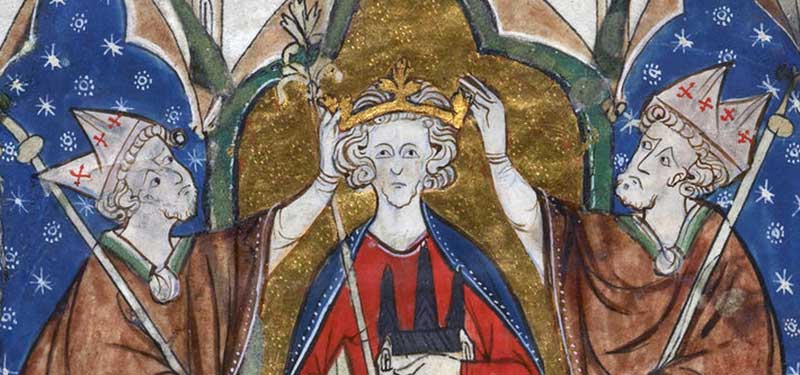
Regent for Henry III: William Marshal’s Stewardship
In 1216, William Marshal became regent for the infant King Henry III of England. During the regency, Marshal successfully navigated a kingdom in turmoil, reissued the Magna Carta, and maintained stability amid both internal and external threats. His wise and fair rule united the factions of the realm and preserved the English monarchy during a critical period in its history.
Marshal’s first challenge as regent was to secure the young king’s position on the throne. He reissued the Magna Carta, which reestablished the crown’s commitment to justice and the rule of law. This move won the support of the rebellious barons and many others in the kingdom. His diplomatic acumen was evident in his negotiations, which led to a peaceful consolidation of power.
Once stability was assured, Marshal focused on administering the kingdom. He reformed the royal household, improved the judiciary, and ensured the efficient collection of revenues. These actions stabilized the economy and restored faith in the monarchy. Marshal’s just and balanced approach to governance earned him the respect and admiration of both nobility and commoners.
The regency of William Marshal during King Henry III’s reign is remembered as a period of wise and courageous leadership. Marshal’s dedication to his young king and the kingdom as a whole set the stage for a long and prosperous reign. By the time of his death in 1219, Marshal had steered the country towards recovery and growth, leaving behind a legacy of outstanding leadership and loyalty to the crown.
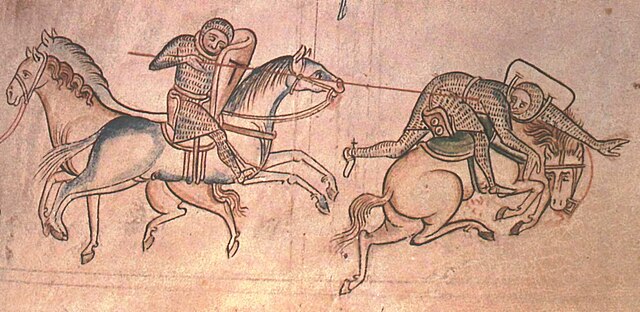
Trial by Combat Against Baldwin de Béthune

William Marshal, a figure of legend and chivalry, is remembered for many deeds, but one of the most remarkable is his trial by combat against another knight, Baldwin de Béthune. Trial by combat was a judicial practice used in medieval times to resolve disputes. It was a process in which two parties in a conflict fought each other, often to the death, to determine the outcome of the case. The belief was that God would intervene and show which side was right.
The trial was a result of a disagreement over a matter of loyalty between the two knights, with each claiming to have the right to a certain piece of land. Baldwin de Béthune was a formidable opponent, known for his skill in combat and his noble blood. The trial itself was a dramatic and intense affair, with both knights fighting valiantly and showing their mettle. The outcome of the trial was a victory for William Marshal, who emerged triumphant after a grueling battle.
The impact of this trial on William Marshal’s reputation was significant. It not only showcased his skill in combat but also his sense of justice and commitment to his principles. The trial by combat was a high-stakes affair, and the fact that Marshal emerged victorious only served to elevate his status in the eyes of his peers. The victory also further cemented his image as a paragon of chivalry, a knight who upheld the highest ideals of knighthood.
William Marshal’s trial by combat with Baldwin de Béthune was a defining moment in his life and a testament to his skills as a knight. The trial was a high-stakes affair that showcased the best of what knighthood had to offer. Marshal’s victory was a testament to his commitment to justice and his skill in combat, and it helped to elevate his status as one of the greatest knights of his time. The trial by combat between William Marshal and Baldwin de Béthune is a story that continues to be told and retold, a reminder of the values and ideals that the knights of old upheld.
Heroics at the Siege of Aumale

The Siege of Aumale is another testament to William Marshal’s courage and tactical genius. With a few knights and a castle under siege, Marshal faced an enemy army of significant size and strength. It was his strategic acumen and leadership that shifted the balance in what seemed like an inevitable defeat. Marshal’s actions during this siege would serve as an enduring example of his military prowess and ability to inspire those he commanded.
During the siege, Marshal utilized the castle’s defenses to his advantage, orchestrating sorties and counterattacks that frustrated the besieging forces. He was able to rally his men, maintaining high morale even as supplies dwindled and the odds against them grew. Marshal’s strategy during the siege demonstrated his deep understanding of medieval warfare and his ability to adapt to evolving battlefield conditions.
The outcome of the Siege of Aumale not only repelled the attackers but also bolstered Marshal’s fame and respect. News of his heroism and leadership during the siege spread far and wide, further elevating his status among peers and enemies alike. Marshal’s conduct in the face of such a challenge reflected the ideals of knighthood, with his actions becoming a legendary tale of bravery, honor, and steadfast duty.
Relief forces eventually arrived, leading to the lifting of the siege and the enemy’s retreat. Marshal’s successful defense of the castle not only saved his stronghold but also added another remarkable chapter to his storied career. His ability to hold out against a superior force until reinforcements arrived showcased his strategic foresight and understanding of the art of war.
The Amazing Life of William Marshal
William Marshal’s story as the greatest knight of England is full of almost unbelievable feats of prowess, unwavering fidelity, and flashes of genius. Through his service to the crown, he acquired great estates in England, Wales, and Ireland. This solidified his family’s place in the nobility for centuries to come. Marshal’s life and career spanned the reigns of five English kings: Henry II, Henry the Young King, Richard I, John, and Henry III. He served all of them with great distinction and was admired by each for his prowess and loyalty.
Marshal is an exceptional knight who has become a powerful landowner and a regent for the king. He served five kings and performed innumerable great deeds. These deeds are detailed in the chronicles and are preserved as a body of “Matiere de Bretagne.” There are the Siege of Aumale and William Marshal’s combat in single combat, and many other examples of great prowess and chivalric spirit. Marshal’s life and career span from the early part of King Henry II’s reign to the last years of his son, Henry III. This was the time of development and stabilization of the centralized governmental institutions in England. His biography is a vivid example of the ideal of knighthood.
